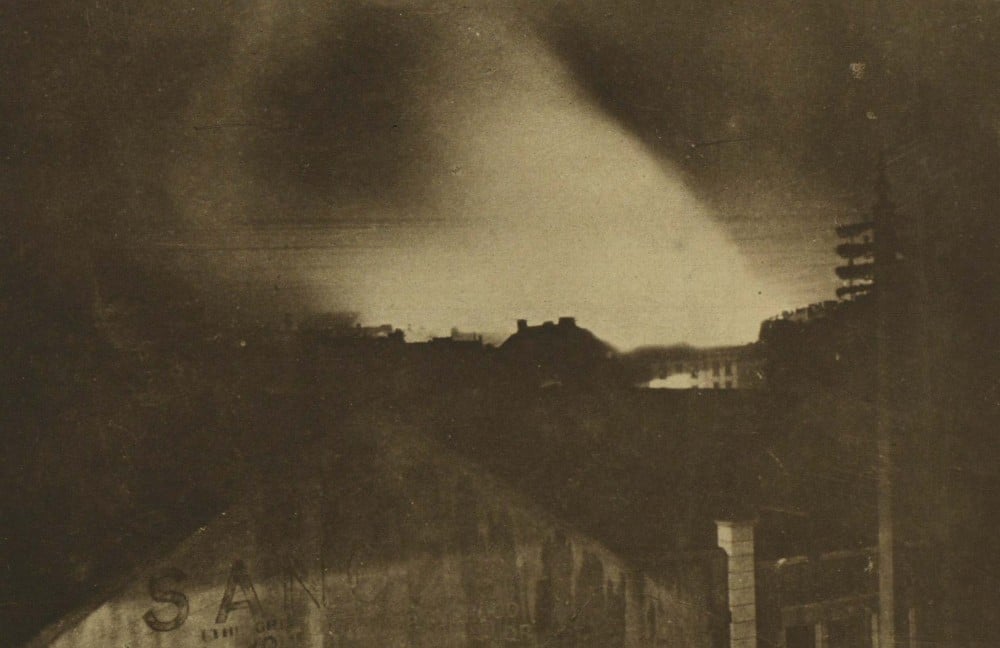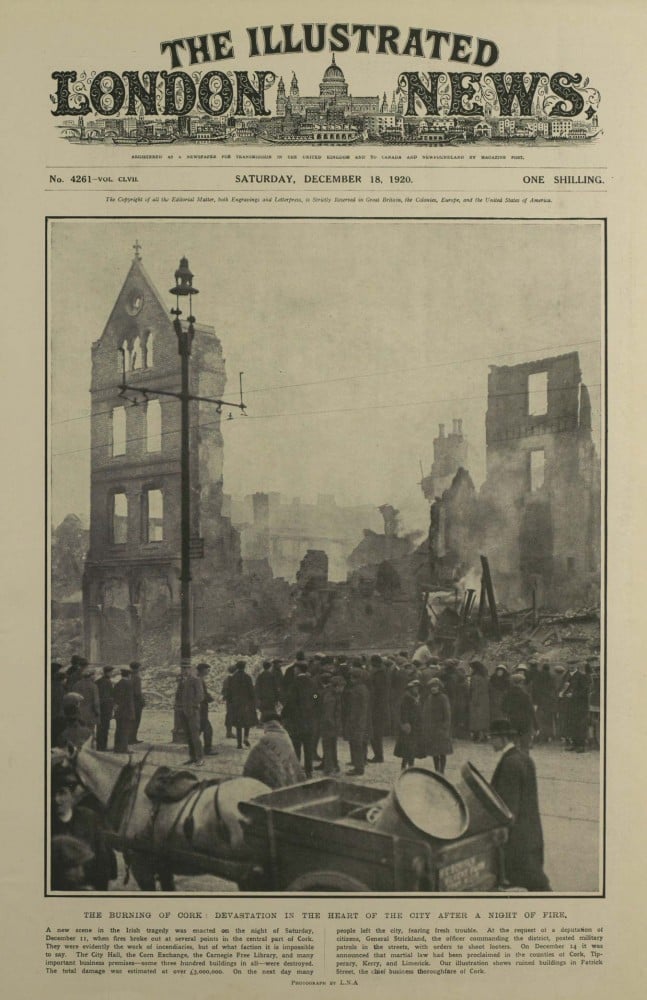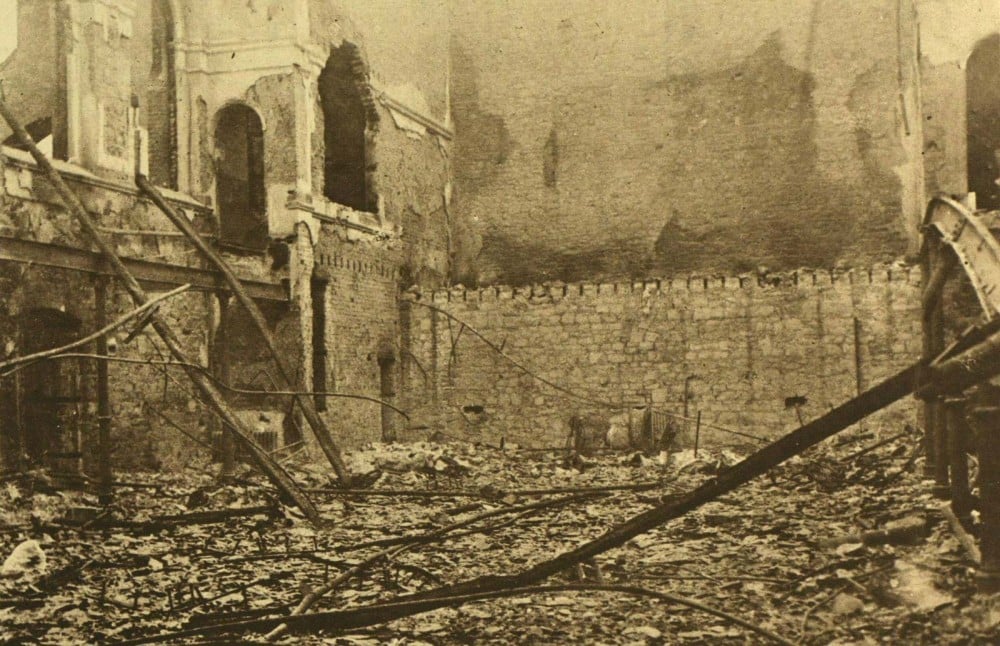Extensive damage to city centre as Cork burns in night of terror
Cork, 15 Dec 1920 - Businesses have been ruined and many landmark buildings reduced to smouldering rubble in fires that have ravaged the centre of Cork city.
The outbreak began on the evening of 11 December when the quiet city was disrupted, at around 10pm, by intermittent bursts of gunfire which sent pedestrians running for the safety of their homes. Shortly afterwards, a serious conflagration erupted in the premises of Grant and Co. Outfitters on Patrick Street. Within an hour, the building lay in ruins and the blaze had spread to neighbouring buildings, with further fires breaking out elsewhere in the city.
One side of Patrick Street, the principal commercial street, was levelled by the flames. Among the buildings burned to the ground were the City Hall, the Carnegie library as well as many of the major businesses on the street, including a number of large drapery establishments, which are big employers in the city. Other thoroughfares in the city were also affected, including Grand Parade and Oliver Plunket Street. On Winthrop Street, the Lee Cinema was almost completely destroyed as was Tyler’s boot shop. Buildings and businesses were also damaged on Cook Street, Robert Street, Morgan Street, Caroline Street, Mayor Street and Merchant Street.
By morning, residents emerged to what the Cork Examiner has described as ‘an appalling and terrifying spectacle’.

The glow over Cork city as it burned (Image: Illustrated London News, 18 December 1920)
The city centre continued to smoulder throughout the following day; the local fire brigade received assistance from the Dublin Fire Brigade, as well as from firemen from Limerick and Waterford to keep it under control. As the damaged buildings were inspected, it became clear that many had been forcibly entered and looted. These businesses would have been fully stocked in anticipation of the Christmas rush.
No lives were lost in the tragedy, but the material and personal costs are expected to run to about £2m and the jobs of 2,000 persons are thought to be in jeopardy.
— RTE History Show (@RTEHistoryShow) December 11, 2020
Who is to blame?
While it was initially thought that the inciendiarism was a
reprisal for an ambush on an Auxiliary patrol earlier that day at
Dillon's Cross which left one cadet dead and 11 wounded, it is
not known for definite who is responsible for the fires.
Members of a British Labour Commision, currently in Ireland to assess the conditions in the country, have visited the scene and informed their party colleagues in London by telegram that they were convinced that the fires were the work of crown forces.
This is not a view shared by the Chief Secretary for Ireland, Sir Hamar Greenwood, however. Questioned in the House of Commons by T.P. O’Connor and others, Greenwood vigorously protested, to sarcastic opposition cheers, any suggestion that the fires were started by the police or miltary.
The Morning Post claims that there is ample evidence that these crimes were, in fact, committed by Sinn Féin who they describe as a ‘gang of anarchists’ who are ‘using the cause of Irish nationalism as a cloak’ for their ultimate aim of causing the downfall of the British empire.

|

|
More scenes of the destruction in Cork caused by the fires (Images: Illustrated London News, 18 December 1920)
[Editor's note: This is an article from Century Ireland, a fortnightly online newspaper, written from the perspective of a journalist 100 years ago, based on news reports of the time.]





















